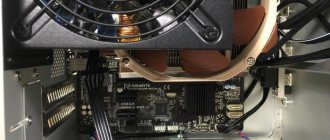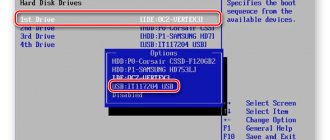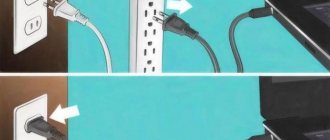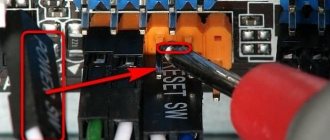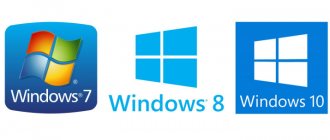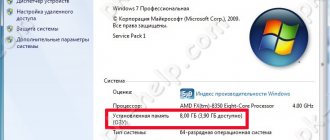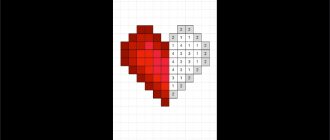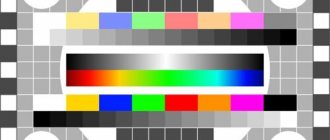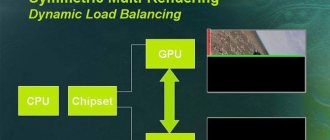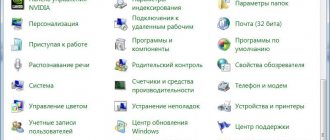A quantum computer is a means of computing where the operation of a central processor is based on the laws of quantum mechanics. Such a computer is fundamentally different from traditional PCs based on silicon chips.
This device uses not classical algorithms for calculations, but processes of a quantum nature - quantum algorithms that use the effects of quantum mechanics, such as quantum parallelism and quantum entanglement.
The basis for calculations of this type is a qubit - a system in which the number of particles is similar to momentum, and the phase variable (energy state) is similar to the coordinate. The phase qubit was first implemented in the laboratory of the University of Delft and has been actively studied since then. Qubits can seem to be in two states at the same time: they can contain zero and one at once. Thanks to this, a quantum computer can perform specific mathematical tasks thousands of times faster than classical computers.
How a quantum computer works
Quantum computers are often misunderstood because they have the word “computer” in their name. When people hear the word computer, they think of laptops or phones, but the fact is that these devices, and even the world's largest supercomputers, operate on the same fundamental circuitry. However, quantum computers have fundamental differences and cannot be called computers in the usual sense of the word.
Quantum computing systems are devices that use the phenomena of quantum superposition and quantum entanglement to transmit and process data. Such devices operate with qubits (quantum bits), which can simultaneously take on the value of both a logical zero and a logical one. Therefore, as the number of qubits used increases, the number of values processed simultaneously increases exponentially.
In a quantum computer, the main element is a qubit - a quantum bit. Unlike an ordinary bit, it is in a state of quantum superposition, that is, it has the value of both 0 and 1, and any combination of them at any time. If there are several qubits in the system, then changing one also entails changing all the other qubits.
This allows you to simultaneously calculate all possible options. A conventional processor, with its binary calculations, actually calculates the options sequentially. First one scenario, then another, then a third, etc. To speed things up, they began to use multithreading, running calculations in parallel, prefetching, to predict possible branching options and calculate them in advance. In a quantum computer, this is all done in parallel.
The calculation principle is also different. In a sense, a quantum computer already contains all possible options for solving the problem; our task is only to read the state of the qubits and... choose the correct option from them. And this is where the difficulties begin. This is the principle of operation of a quantum computer.
Progress in the development of quantum computing over the past 20 years:
An example of how quantum computing works
To understand the potential of quantum computing, let's look at a simple problem: walking through a maze.
The only way to solve such a problem on a classical computer is to try all possible options, a series of successes and failures. However, a quantum computer, using the full power of quantum physics, checks all options simultaneously
and gives the correct solution much faster.
It would seem that you can wait a little and a classical computer will solve the problem, why build a complex quantum machine? Everything would be fine, but humanity is constantly faced with tasks that will take thousands, millions, billions of years of calculations
on the most powerful supercomputers in the world. Time is an unaffordable luxury for humans; we need solutions to these problems today. Let's try to figure out where exactly the power of a quantum computer can help us?
What problems can a quantum computer be used to solve?
A quantum computer is not capable of completely replacing a classical one, and this is not necessary. An ordinary computer copes with many problems, but still, there is a class of problems that a quantum machine can solve in an hour, while classical computers will need the lifetime of the Universe.
Problems of this type known today can be divided into 4 groups.
Problems with Fourier transform
These are mainly cryptography and encryption : the same Shor algorithm that can allow you to hack RSA and Bitcoin. This happens because the quantum Fourier transform is incredibly fast and, if used correctly, it gives an exponential speedup.
Optimization problems
This includes combinatorial problems
, which can only be solved by searching through all possible options, for example, the labyrinth, which was discussed above. Another sensational quantum algorithm, Grover's algorithm, allows solving such problems faster than conventional search, however, it does not provide such a strong acceleration as Shor's algorithm. Combinatorial problems constantly arise in the fields of logistics, optimization and economics.
Quantum Machine Learning
The third quantum algorithm that provides noticeable acceleration is the HHL algorithm. It is capable of solving a system of linear equations exponentially faster than any classical algorithm; As we know, linear equations arise everywhere, for example in machine learning problems.
Quantum-assisted machine learning
This is one of the most useful applications of quantum computers.
And in general, the use of quantum physics in artificial intelligence problems is cool: you can, for example, use quantum samples
, which are in a state of superposition of several classical samples.
Quantum System Simulations
This is the most natural application of quantum computers. This approach was proposed by Feynman: in order to simulate a very complex quantum system, you need another complex quantum system , which you know everything about and know how to control it.
Therefore, a full-fledged quantum computer will help create new materials, new medicines, and high-temperature superconductors. These are problems where it is necessary to cleverly organize the interaction of atoms, but to understand exactly how to do this, classical computers will require trillions of years of calculations, while large quantum computers will need several hours.
Quantum processor: job description
Classic bits can take the value 0 or 1. If you pass their string through “logical gates” (AND, OR, NOT, etc.), you can multiply numbers, draw images, etc. A qubit can take values 0, 1 or both at the same time. If, say, 2 qubits are entangled, then this makes them perfectly correlated. A quantum processor can use logic gates. T.n. The Hadamard gate, for example, places the qubit in a state of perfect superposition. When superposition and entanglement are combined with cleverly placed quantum gates, the potential of subatomic computing begins to unfold. 2 qubits allow you to explore 4 states: 00, 01, 10 and 11. The operating principle of a quantum processor is such that performing a logical operation makes it possible to work with all positions at once. And the number of available states is 2 to the power of the number of qubits. So if you made a 50-qubit universal quantum computer, you could theoretically explore all 1.125 quadrillion combinations at once.
How is a quantum computer different from a regular one?
Quantum computing and quantum communication - these concepts themselves were invented literally 30 years ago, and the first works of scientists were not even accepted into scientific journals: they said it was science fiction, not science. Today, quantum systems not only exist, but are also sold for money, creating and solving new security problems, mainly in the field of cryptography.
Quantum computers are machines based on unique behavior described by quantum mechanics, which is completely different from the behavior of classical systems. One such difference is the ability of a particle or group of particles, in some respect, to exist in only two discrete quantum ground states—call them 0 and 1.
A quantum computer is unsuitable for most everyday tasks, but it can quickly solve the mathematical problems on which modern cryptography is based.
The fundamental difference between a quantum computer and a conventional one is that its operating unit - a qubit (quantum bit) can be in a state of uncertainty, or, if you like, in several states simultaneously. It sounds confusing, even more complicated in practice, but years of research have shown that it works.
Here are the key differences between a quantum and a conventional computer:
| Regular computer | Quantum computer | |
| Logics | 0 / 1 | `a|0> + b|1>, a^2+b^2=1` |
| Physics | Semiconductor transistor | Quantum object |
| Information carrier | Voltage levels | Polarization, spin,… |
| Operations | NOT, AND, OR, XOR over bits | Valves: CNOT, Hadamard,… |
| Relationship | Semiconductor chip | Confusion with each other |
| Algorithms | Standard (see Whip) | Specials (Shore, Grover) |
| Principle | Digital, deterministic | Analog, probabilistic |
A quantum computer is very different from a classical one and is hardly suitable for playing Tetris, but it solves probabilistic and optimization problems immeasurably faster than a conventional one.
Some of the things that can be radically accelerated by quantum computing include optimizing transportation routes, sequencing DNA, predicting stock prices, and guessing cryptographic keys. True, the answer will also always be probabilistic, even reading it from a computer is a difficult problem, but by making several fairly quick runs of the same task, you can come to one single, correct answer: in the case we are interested in, the encryption key.
Why are quantum computers needed?
One of the most important applications of a quantum computer right now is decomposition into prime numbers. The fact is that all modern cryptography is based on the fact that no one can quickly factor a number of 30–40 digits (or more) into prime factors. On a regular computer this would take billions of years. A quantum computer can do this in about 18 seconds.
This means that there will be no more secrets, because any encryption algorithms can be immediately hacked and access to anything. This applies to everything from bank transfers to instant messenger messages. There may be an interesting moment when conventional encryption stops working and quantum encryption has not yet been invented.
Quantum computers are also great for simulating complex situations, for example, calculating the physical properties of new elements at the molecular level. This may make it possible to quickly find new drugs or solve complex resource-intensive problems.
Now quantum computers cannot do all this - they are too complex to manufacture and very unstable in operation. The maximum that can be done for now is to tailor a quantum computer to a single algorithm in order to get a colossal performance gain on it. It is precisely for these purposes that the largest companies purchase them - in order to quickly solve one or two of their most important tasks.
What can quantum computers do that regular computers cannot?
Quantum computers operate on very different principles from existing computers, which makes them really well suited for solving certain mathematical problems, such as finding very large prime numbers. Because prime numbers are so important in cryptography, it is likely that quantum computers will quickly be able to break many of the systems that keep our online information secure. Because of these risks, researchers are already trying to develop technology that is resistant to quantum hacking, and on the other hand, it is possible that quantum cryptographic systems will be much more secure than their traditional counterparts.
Quantum computers are expected to be used to simulate complex chemical reactions. In July 2020, Google engineers first used a quantum device to simulate the hydrogen molecule, and since then IBM has been able to simulate the behavior of even more complex molecules. In 2020, Microsoft released a preview version of a new programming language for quantum computing called Q# and a simulator for testing and debugging quantum algorithms.
The Chinese government is building a national quantum information laboratory in Anhui province (near Shanghai) at a cost of $10 billion and is scheduled to open in 2020. Government research in the field of quantum computing currently amounts to about $200 million per year.
Quantum computer implementation options
Today there are many implementations of quantum computing, but the most promising in my opinion are the following approaches:
- Spins in a solid
- Superconductors
- Photonics
- Single atoms (cold ions or NMR)
Spins in a solid
Historically, qubits were thought of as spins, so the idea of having a lot of spins in some solid body (so that they don't run away) is a natural one for implementing quantum computing.
This approach is theoretically scalable, but, of course, it has its own difficulties, such as the process of manufacturing devices and managing the quantum state. But the lifetimes of the qubits turn out to be impressively long.
Superconductors
Perhaps this is the most promising implementation of quantum computing, and not only I think so: IBM, Google, Intel, Rigetti, D-Wave, and almost all the large companies that deal with quantum computing hardware deal directly with the hardware, because in such an implementation of a quantum computer Qubits are superconducting metal structures on a silicon chip, much like the transistors in a conventional processor.
Qubits are cooled to low temperatures to force them into a quantum state and eliminate thermal noise. This technology is scalable, that is, nothing prevents us from making a processor several centimeters in size, which will contain millions of qubits.
Photonics
Photonics is most often used in cryptography, because photons (particles of light) are quantum in themselves and do not need cold: lasers and optical fiber are used for cryptographic protocols.
The basis for quantum computing can be done in the same way, or it can be implemented on chips through which photons are transmitted. This technology is also scalable, but the engineering difficulties here seem to be greater than those of superconductors.
Single atoms (cold ions or NMR)
Imagine, people have learned to catch individual atoms using an optical trap and cool them using a laser. It's quite cheap and simple.
The first 50-qubit computer was assembled from cold atoms at Harvard. However, the size of the trap is limited, making this technology extremely difficult to scale. The same applies to NMR: you take a complex molecule and call each atom in it a qubit. The size of molecules is limited, which complicates the creation of a large computer; moreover, there are problems with reading the state of the qubit.
Problems of quantum computers
When designing and operating quantum computers, scientists and engineers face a huge number of problems, which to date have been solved with varying degrees of success. According to a study (similar study), the following series of problems can be identified:
- Sensitivity to the environment and interaction with the environment.
- Accumulation of errors during calculations.
- Difficulties with the initial initialization of qubit states.
- Difficulties in creating multiqubit systems.
Let's organize all the main problems into three large groups and take a closer look at each of them.
Decoherence
The quantum state is a very fragile thing , qubits in an entangled state are extremely unstable, any external influence can (and does) destroy this connection . A change in temperature by the smallest fraction of a degree, pressure, a random photon flying nearby - all this destabilizes our system.
To solve this problem, low-temperature sarcophagi are built, in which the temperature (-273.14 degrees Celsius) is slightly above absolute zero, with maximum isolation of the internal chamber with the processor from all (possible) influences of the external environment.
The maximum lifetime of a quantum system of several entangled qubits, during which it retains its quantum properties and can be used for calculations, is called decoherence time.
Currently, the decoherence time in the best quantum solutions is on the order of tens and hundreds of microseconds .
There is an excellent website quantumcomputingreport.com, where you can see comparative tables of parameters of all created quantum systems. In this article, as an example, only two top processors are included - from IBM IBM Q System One and from Google Sycamore. As we can see, the decoherence time (T2) does not exceed 200 μs.
I did not find exact data on Sycamore, but in the article on quantum supremacy there are two figures - 1 million calculations in 200 seconds , in another place - in 130 seconds without losses on control signals and so on . In any case, this gives us a decoherence time of the order of 150 µs .
| Computer Name | N Qubits | Max paired | T2 (µs) |
| IBM Q System One | 20 | 6 | 70 |
| Google Sycamore | 53 | 4 | ~150-200 |
What does decoherence threaten us with?
The main problem is that after 150 μs, our computing system of N entangled qubits will begin to output probabilistic white noise instead of a probabilistic distribution of correct solutions.
That is, we need:
- Initialize the qubit system
- Perform a calculation (chain of gate operations)
- Read result
And do all this in 150 microseconds. I didn’t have time - the result turned into a pumpkin. But that is not all…
Errors
As we have already said, quantum processes and quantum calculations are of a probabilistic nature ; we cannot be 100% sure of anything, but only with some probability. To make matters worse, quantum computing is error-prone .
The main types of errors in quantum computing are:
- Decoherence errors are caused by the complexity of the system and interaction with the external environment
- Gate computational errors (due to the quantum nature of computation)
- Errors in reading the final state (result)
Errors associated with decoherence occur as soon as we entangle our qubits and start doing calculations. The more qubits we entangle, the more complex the system is , and the easier it is to destroy. Low-temperature sarcophagi, protected chambers, all these technological tricks are precisely aimed at reducing the number of errors and extending the decoherence time.
Computational errors of gates - any operation (gate) on qubits can, with some probability, end with an error, and to implement the algorithm we need to perform hundreds of gates, so imagine what we get at the end of the execution of our algorithm. The classic answer to the question is “What is the probability of meeting a dinosaur in an elevator?” - 50x50, either you will meet or not.
The problem is further aggravated by the fact that standard error correction methods (duplication of calculations and averaging) do not work in the quantum world due to the no-cloning theorem. To correct errors in quantum computing, we had to come up with quantum correction methods. Roughly speaking, we take N ordinary qubits and make 1 logical qubit with a lower error rate.
But here another problem arises - the total number of qubits . Look, let’s say we have a processor with 100 qubits, of which 80 qubits are used for error correction, then we only have 20 left for calculations.
Errors in reading the final result - as we remember, the result of quantum calculations is presented to us in the form of a probability distribution of answers . But reading the final state may also fail with an error.
The same site has comparison tables of processors by error levels. For comparison, let's take the same processors as in the previous example - IBM IBM Q System One and Google Sycamore:
| Computer | 1-Qubit Gate Fidelity | 2-Qubit Gate Fidelity | Readout Fidelity |
| IBM Q System One | 99.96% | 98.31% | — |
| Google Sycamore | 99.84% | 99.38% | 96.2% |
Here fidelity is a measure of the similarity of two quantum states. The magnitude of the error can be roughly expressed as 1-Fidelity. As we can see, errors on 2-qubit gates and readout errors are the main obstacle to executing complex and long algorithms on existing quantum computers.
You can also read the 2020 roadmap from NQIT on solving the error correction problem.
Processor architecture
In theory, we build and operate circuits of dozens of entangled qubits , but in reality everything is more complicated. All existing quantum chips (processors) are built in such a way that they ensure painless entanglement of one qubit only with its neighbors , of which there are no more than six.
If we need to entangle the 1st qubit, say, with the 12th, then we will have to build a chain of additional quantum operations , use additional qubits, etc., which increases the overall error level. Oh, and don't forget about the decoherence time , perhaps by the time you finish connecting the qubits into the circuit you need, the time will run out and the whole circuit will turn into a nice white noise generator .
Also, do not forget that the architecture of all quantum processors is different , and a program written in the emulator in the “connectivity of all to all” mode will need to be “recompiled” into the architecture of a specific chip. There are even special optimizer programs to perform this operation.
Maximum connectivity and maximum number of qubits for the same top chips:
| Computer Name | N Qubits | Max paired | T2 (µs) |
| IBM Q System One | 20 | 6 | 70 |
| Google Sycamore | 53 | 4 | ~150-200 |
And, for comparison, a table with data from the previous generation of processors . Compare the number of qubits, decoherence time and error rate with what we have now with the new generation. Still, progress is slow, but moving.
What we have as a result:
- There are currently no fully connected architectures with > 6 qubits.
- To entangle qubit 0 s on a real processor, for example, qubit 15 may require several dozen additional operations.
- More operations -> more errors -> stronger influence of decoherence.
Ways to solve problems
To solve the above problems, the following approaches and methods are currently used:
- Use of cryochambers with low temperatures (10 mK (–273.14°C)).
- Using processor units that are maximally protected from external influences.
- Use of quantum error correction systems (Logic qubit).
- Using optimizers when programming circuits for a specific processor.
Research is also being conducted aimed at increasing the decoherence time, searching for new (and improving known) physical implementations of quantum objects, optimizing correction circuits, etc., etc. There is progress (look above at the characteristics of earlier and today's top-end chips), but so far it is slow, very, very slow.
Difference between dream and reality
The IBM machine uses quantum phenomena that occur in superconducting materials. For example, sometimes current flows clockwise and counterclockwise at the same time. The IBM computer uses superconducting chips in which two different electromagnetic energy states make up a qubit.
The superconducting approach has many advantages. The hardware can be created using well-known, established methods, and a regular computer can be used to control the system. Qubits in a superconducting circuit are easy to manipulate and less delicate than individual photons or ions.
At IBM's quantum lab, engineers are working on a 50-qubit version of the computer. You can run a simple quantum computer simulator on a regular computer, but with 50 qubits it would be nearly impossible. And this means that IBM is theoretically approaching the point at which a quantum computer will be able to solve problems that a classical computer cannot: in other words, quantum supremacy.
And it all works.
But IBM scientists will tell you that quantum supremacy is an elusive concept. You'll need all 50 qubits to work perfectly, when in reality quantum computers suffer greatly from errors. It is also incredibly difficult to maintain qubits for a given period of time; they are prone to “decoherence,” that is, to the loss of their delicate quantum nature, like a ring of smoke dissolving at the slightest breath of breeze. And the more qubits, the more difficult it is to cope with both tasks.
“If you had 50 or 100 qubits and they actually worked well enough and were completely free of errors, you could perform incomprehensible calculations that could not be reproduced on any classical machine, not now, not then, not yet.” in the future,” says Robert Schoelkopf, professor at Yale University and founder of Quantum Circuits. “The downside of quantum computing is that there is an incredible amount of room for error.”
In order not to miss anything interesting from the world of high technology, subscribe to our news channel on Telegram. There you will learn a lot of new things.
Another reason to be cautious is that it is not entirely clear how useful even a perfectly functioning quantum computer would be. It doesn't just speed up any problem you throw at it. In fact, in many types of calculations it will be disproportionately “dumber” than classical machines. Not many algorithms have been identified to date in which a quantum computer would have a clear advantage. And even with them, this advantage may not last. The most famous quantum algorithm, developed by Peter Shor of MIT, is designed to find prime factors of an integer. Many well-known cryptographic schemes rely on the fact that this search is extremely difficult for a normal computer to perform. But cryptography can adapt and create new kinds of code that don't rely on factorization.
That's why, even as we approach the 50-qubit milestone, IBM researchers themselves are trying to dispel the hype. At a table in the hallway that opens onto a lush lawn outside stands Jay Gambetta, a tall Australian researching quantum algorithms and potential applications for IBM hardware. "We're in a unique position," he says, choosing his words carefully. “We have this device that is more complex than anything that can be simulated on a classical computer, but it is not yet controlled with sufficient precision to run known algorithms through it.”
Which gives all IBMers hope that even an imperfect quantum computer can be useful.
Gambetta and other researchers began with an application that Feynman had envisioned back in 1981. Chemical reactions and properties of materials are determined by interactions between atoms and molecules. These interactions are governed by quantum phenomena. A quantum computer can (at least in theory) simulate them in a way that a conventional one cannot.
Last year, Gambetta and his colleagues at IBM used a seven-qubit machine to model the precise structure of beryllium hydride. Consisting of just three atoms, this molecule is the most complex molecule ever modeled using a quantum system. Scientists will eventually be able to use quantum computers to design efficient solar cells, drugs or catalysts that convert sunlight into clean fuel.
These goals, of course, are still unimaginably far away. But as Gambetta says, valuable results can be obtained from quantum and classical computers working together.
The world's first quantum internet protocol
Dutch scientists have developed the world's first protocol for the so-called quantum Internet, which operates without interference and is maximally protected from hacking. The idea belongs to specialists from the QuTech research center.
The protocol, which operates at the data link level, was developed by a group of scientists led by Professor Stephanie Wehner. They also worked out the general concept of quantum networks, which in the future, in their opinion, could replace the traditional Internet and local networks.
The idea of QuTech specialists is based on the principle of very fast processing of qubits, since they cannot remain in memory for a long time. This will ensure a high speed of information transfer, and the phenomenon of quantum entanglement, another basis of the protocol, will make it possible to protect the transmitted data as much as possible.
The phenomenon of quantum entanglement implies the interdependence of two or more objects, in this case qubits, and their inextricable connection with each other. An attempt to intercept data will lead to a change in the quantum state of one or more qubits and, as a result, to the loss of transmitted information. In other words, information can only be received by the target device - unauthorized access to it is excluded.
Stefanie Weiner left technical details about the operation of the first quantum network protocol secret. She only clarified that the physical infrastructure of the regular Internet is quite suitable for the operation of the quantum Internet.
Quantum computing
The theory states that without interaction with other particles, the electron has no unique coordinates in the atomic orbit. Only when measuring does the uncertainty disappear and the location of the particle becomes known.
The probabilistic nature of changes makes it possible to use quantum computing to search unstructured databases.
Superposition and entanglement
The operation of a computer is based on two mechanical phenomena:
- Confusion. A phenomenon in which the state of two or more objects is interdependent. For example, 2 photons in an entangled state will have both negative and positive helicity. The relationship will be preserved if objects are removed from each other in space.
- Coherent superposition. Simultaneous exposure of a particle to alternative (mutually exclusive) states.
Decoherence
This is a process in which the state of a quantum system becomes uncontrollable. Decoherence occurs when many qubits depend on each other. The problem occurs when the computer interacts with radiation, cosmic rays or a magnetic field.
Various methods are used to protect computers from slipping into normal computing processes. D-Wave Systems cools atoms to zero to protect them from external influences. The quantum processor is placed in protective shells, so the finished devices are very bulky.
- Moscow ASC-DTI - what it is and what organization it is. Registered letters, notices with the code Moscow ASC-DTI
- DIY patchwork quilt: how to sew for beginners
- Twenty-fifth week of pregnancy
Which companies are developing quantum computers today?
Formally, the Canadian company D-Wave has advanced the furthest in this race. It has created and successfully sells the only quantum computers on the market today. Its clients include Google, NASA, Volkswagen and Lockheed Martin. At the end of January this year, D-Wave announced the release of a commercial version of the fourth generation quantum computer D-Wave 2000Q. Its power, according to the company, is 2000 qubits. However, many doubt that D-Wave machines can be called full-fledged quantum computers, since they are only capable of solving a narrow range of computing problems. Google does not agree with this opinion. The computer purchased by the search engine from D-Wave (by the way, it costs between $10 million and $15 million) coped with a certain special task 100 million times faster than usual.
The American IBM is preparing to bring to market quantum computers with a computing power of 50 qubits. This will happen, according to the company, in the next few years. With the help of quantum computers, tentatively called IBM Q, it will be possible, in particular, to “unravel” complex molecular and chemical interactions, which will lead to the discovery of new drugs and materials, according to IBM. Big changes await the logistics sector: optimal ways will be found for the most efficient delivery of goods. Quantum computers will also allow us to find new ways to model financial data and highlight key global risk factors, which will protect investments. In the field of artificial intelligence and machine learning, it will be possible to process very large volumes of data (for example, related to image or video searches). “We are now moving from a stage where we are talking only about toys for researchers, to a situation that allows us to evaluate the innovation from a commercial point of view,” said Scott Crowder, technical director of the IBM quantum center. Previously, IBM created a quantum computer with a power of 5 qubits.
Almost simultaneously with IBM, Google announced plans to release a commercial 50-qubit quantum computer. Moreover, the deadlines are approximately the same - the next 5 years. “The field of quantum computing is about to reach a historic milestone,” researchers from Google's Quantum AI Lab wrote in a paper published in the journal Nature. The search engine began working on the creation of a quantum computer back in 2014.
The successes of competitors are spurring another major player - Microsoft. Last November, it announced its decision to redouble its efforts to create a quantum computer. Unlike IBM and Google, Bill Gates's company is betting on the intriguing but unproven concept of topological quantum computing. “I think we're on the cusp of moving from research to development,” said Todd Holmdahl, vice president of Microsoft's quantum program. At the same time, the company is developing software for future supercars.
In total, according to the analytical company CB Insights, at least 18 corporations are struggling with the task of creating a quantum computer. Among them are the aircraft manufacturers Airbus and Lockheed Martin, the Chinese online retailer Alibaba, the British telecommunications company British Telecommunications, Hewlett Packard, Toshiba, Intel, Mitsubishi, and Nokia.
Experts at the Massachusetts Institute of Technology (MIT) expect that full-fledged quantum computers, processing information many times faster than modern supercomputers, will appear on the market within the next five years.
What kind of beast is this – a quantum computer?
So, in classical computing, a bit is a single piece of information that can exist in two states—1 or 0. Instead, quantum computing uses quantum bits, or “qubits.” These are quantum systems with two states. However, unlike a regular bit, they can store much more information than just 1 or 0 because they can exist in any superposition of these values.
Since May 2020, Australia's first quantum computer company, Silicon Quantum Computing Pty Limited (SQC), has been working to create and commercialize a quantum computer based on a set of intellectual property developed at CQC2T (Australia's Center of Excellence for Quantum Computing and Communications Technologies) and using your developments.
IBM quantum computer. It is a huge freezer that keeps the device at a temperature of 15 millikelvin (about absolute zero degrees and 180 times colder than temperatures in interstellar space). The electrical wiring is made of superconducting coaxial cables. The inputs to computers are microwave pulses that manipulate particles to create a signal. This signal is then interpreted by computer operators.
CQC2T researchers have shown for the first time that they can create atomically precise qubits in a three-dimensional device, a critical step towards a universal quantum computer, sciencedaily.com reports, citing an article on nature.com.
In fact, for the first time, an architecture has been demonstrated that uses atomic-scale qubits aligned along control lines, which are essentially very narrow connections within a 3D design.
What's more, the team was able to align the different layers in their 3D device with nanometer precision - and showed that they could read out the states of a qubit at a time, that is, in one measurement, with very high fidelity.
“This three-dimensional device architecture is a significant advance for atomic qubits in silicon,” says Professor Simmons, “to be able to continuously correct errors in quantum computing, a major milestone in our field, you need to be able to control many qubits in parallel.”
Three-dimensional architecture is considered an important step in the development of the concept of creating a large-scale quantum computer. A paper in Nature Nanotechnology describes how the second control plane was built, or rather the next layer on top of the first layer of qubits.
Previously it was believed that this could not be done because the surface of the second layer becomes very rough. Simmons' team demonstrated that they could align these multiple layers with nanometer precision.
“If you write something on the first silicon layer and then put a silicon layer on top, you still need to specify your location to align the components on both layers. We showed a technique that allows us to achieve alignment within 5 nanometers!” — Michelle Simmons shares.
Silicon Quantum Computing Pty Limited's strategy enables the formation of an all-crystalline transistor using only two atomic particles: phosphorus and silicon.
